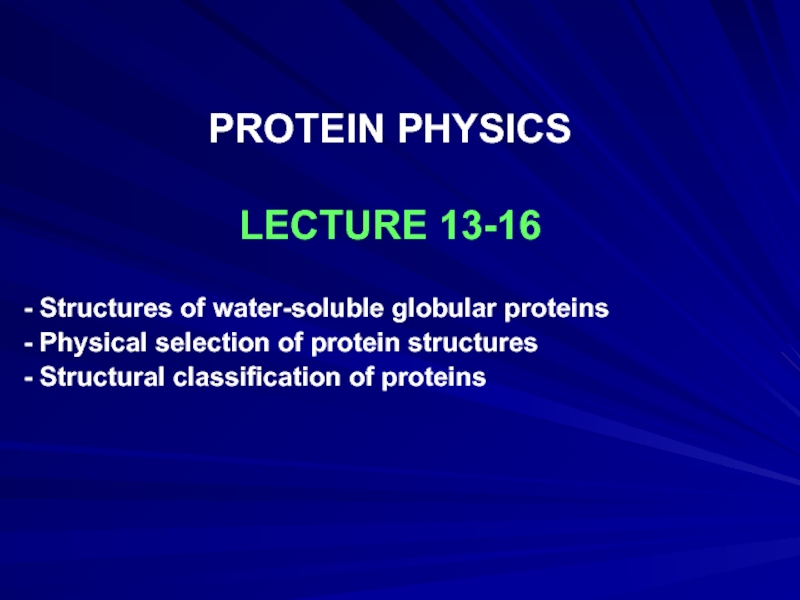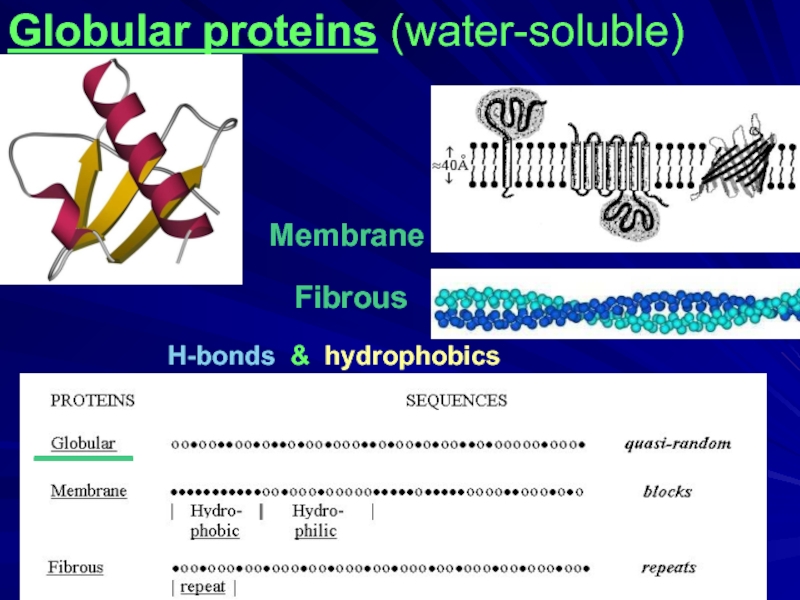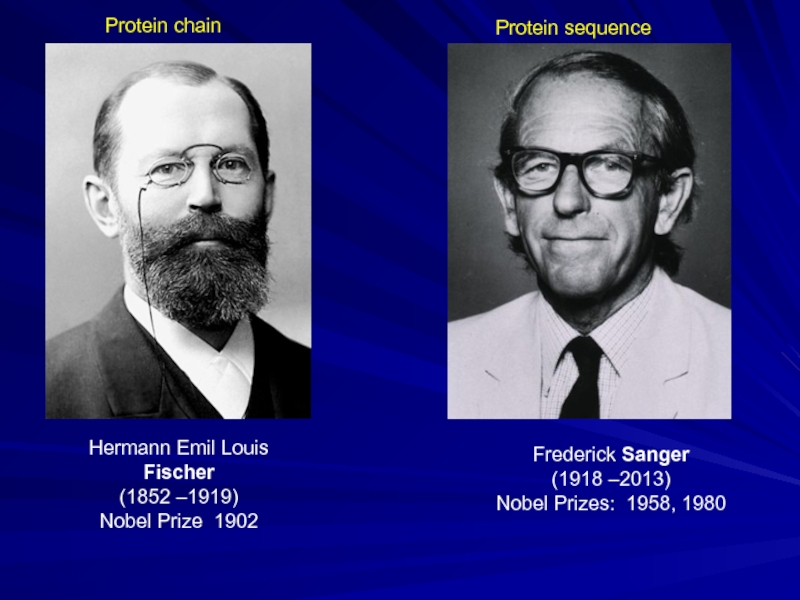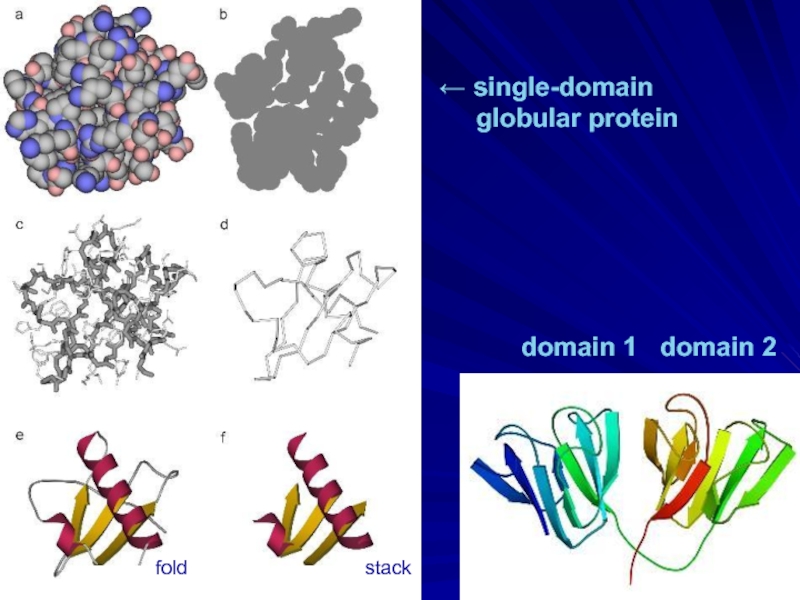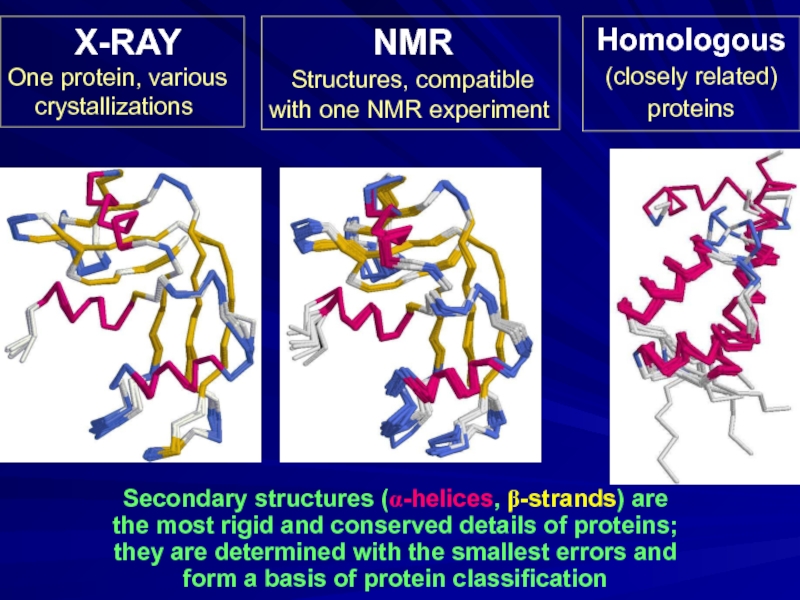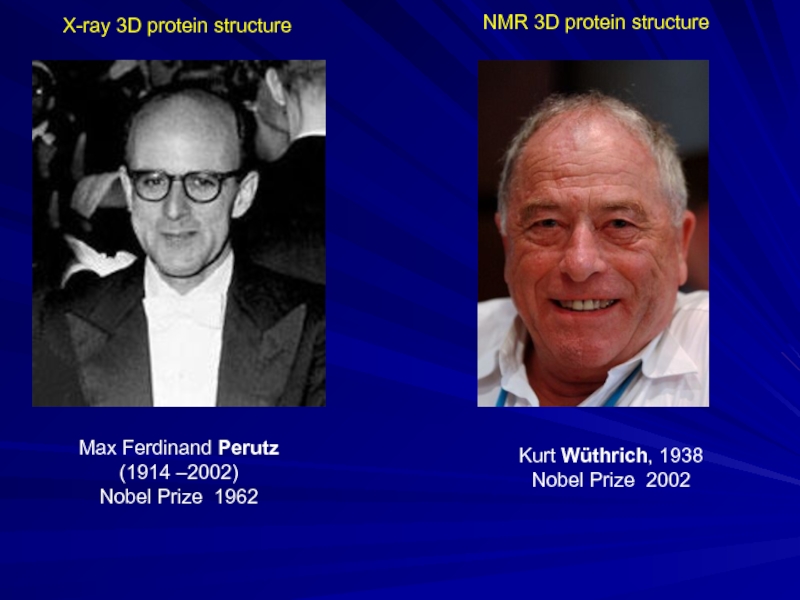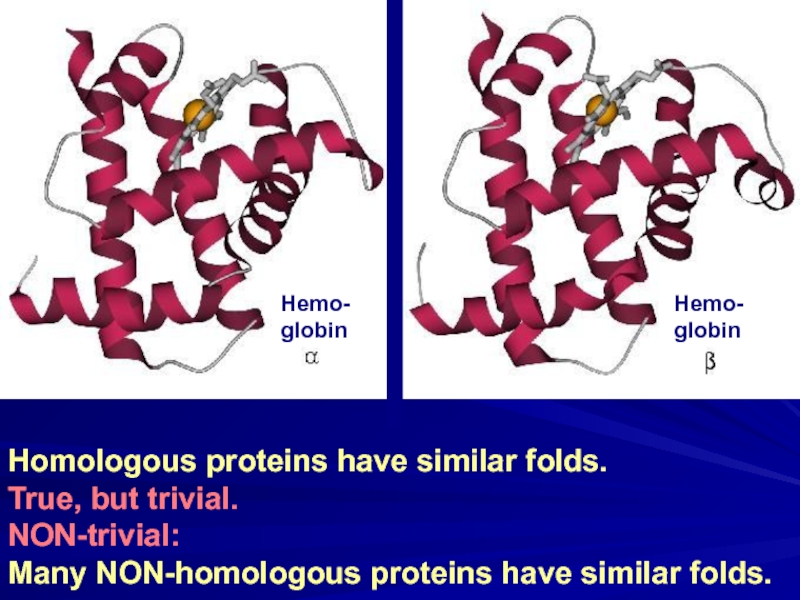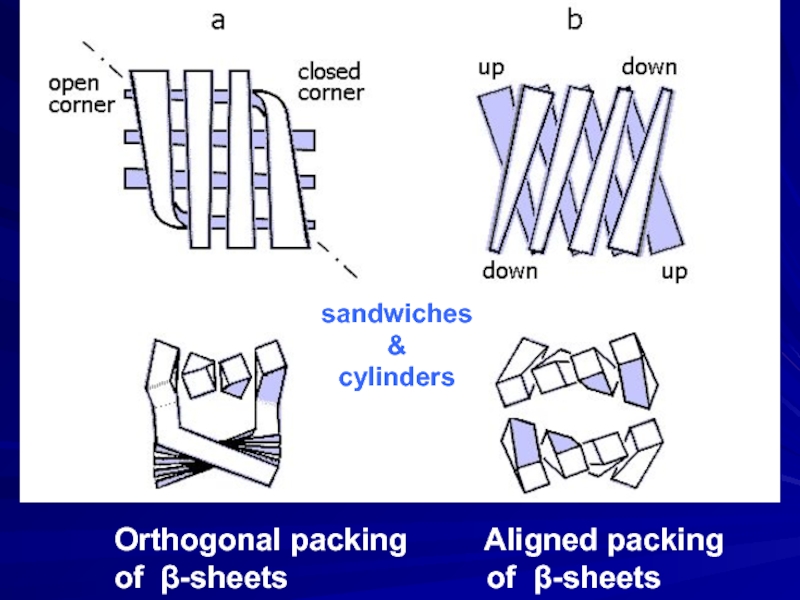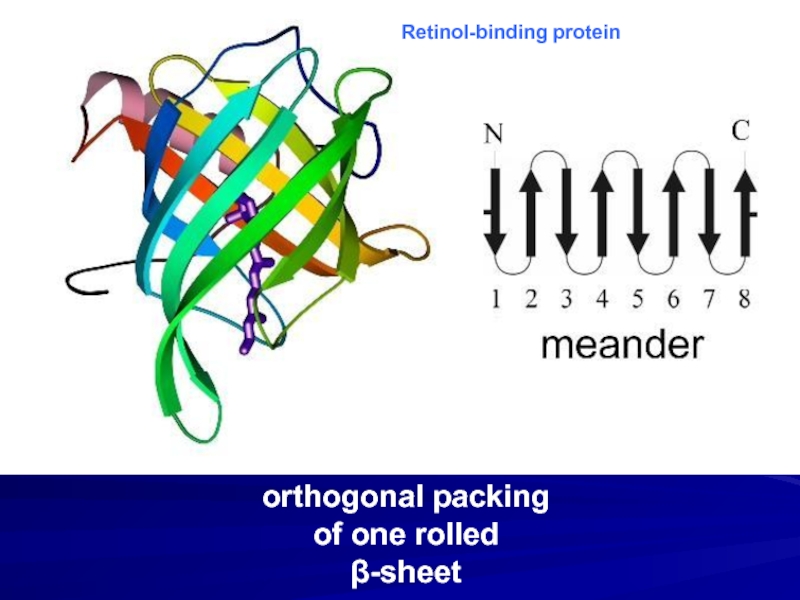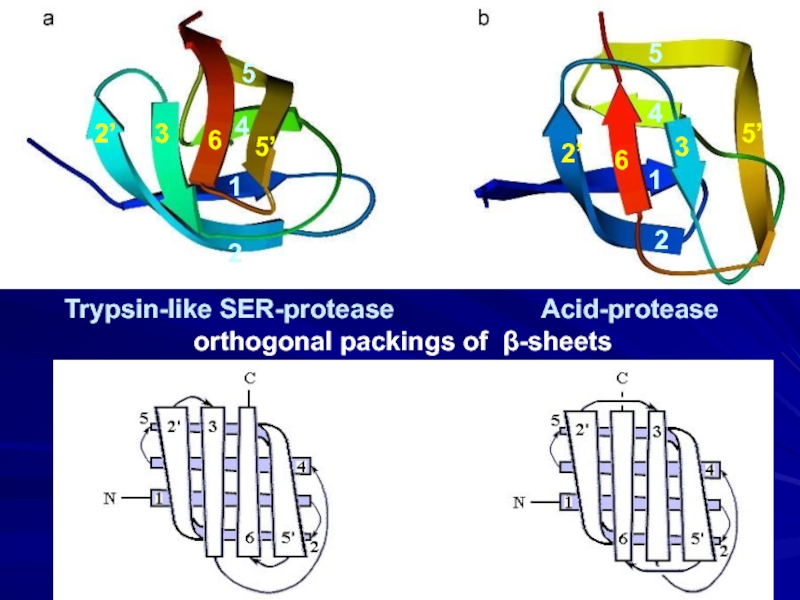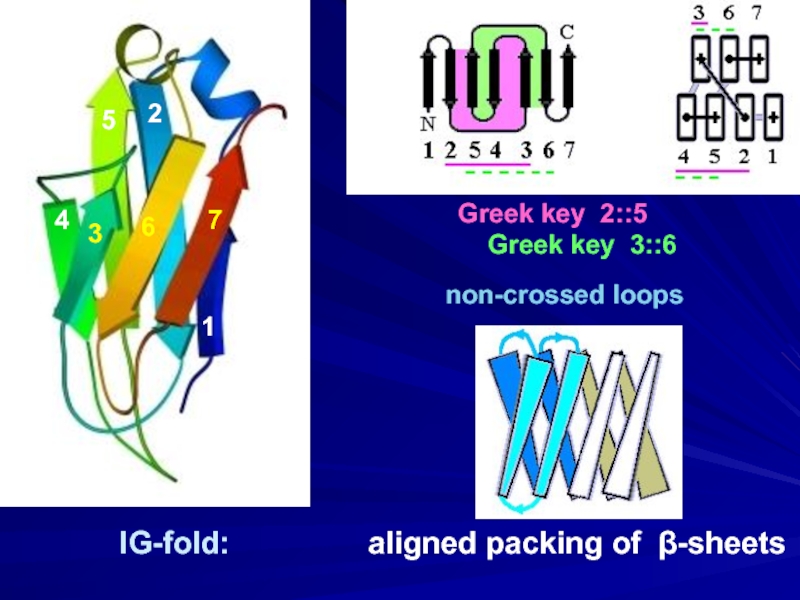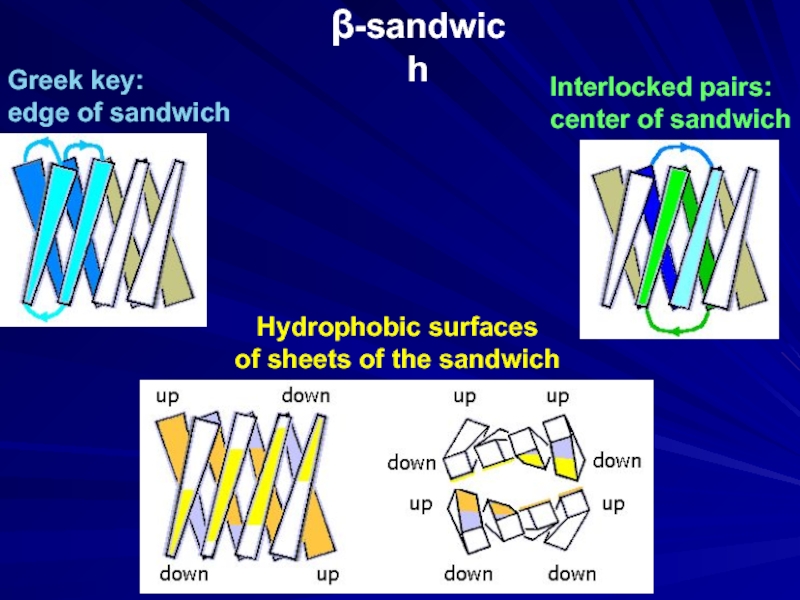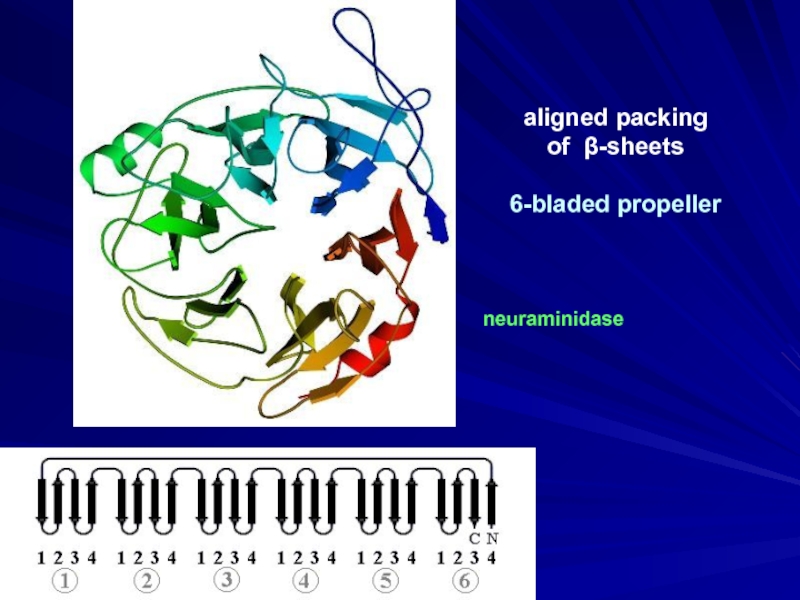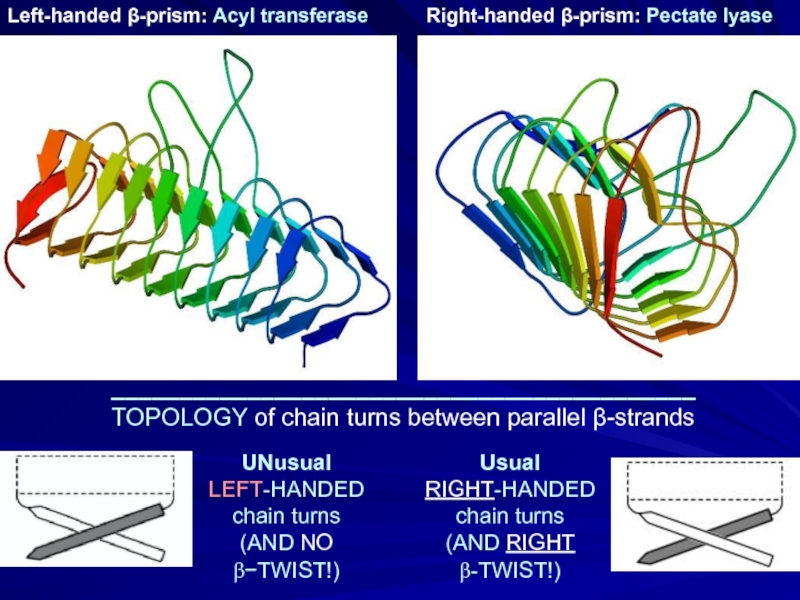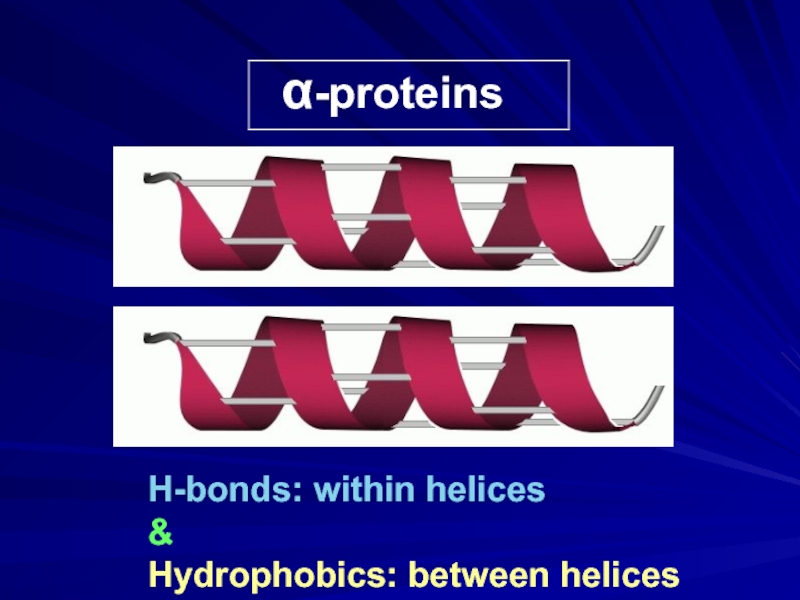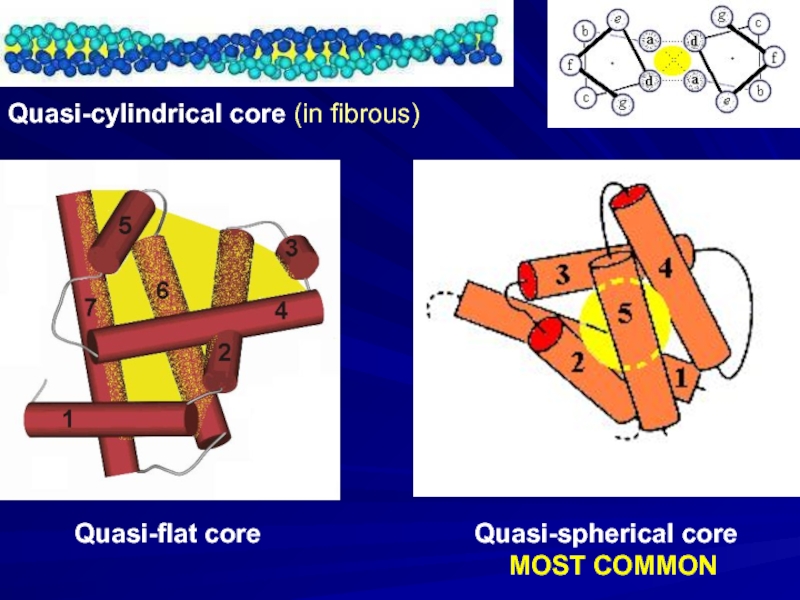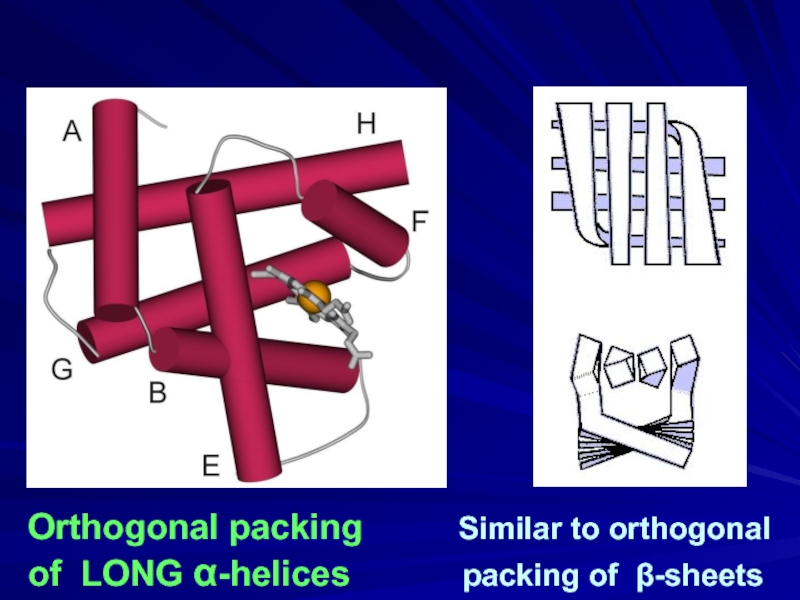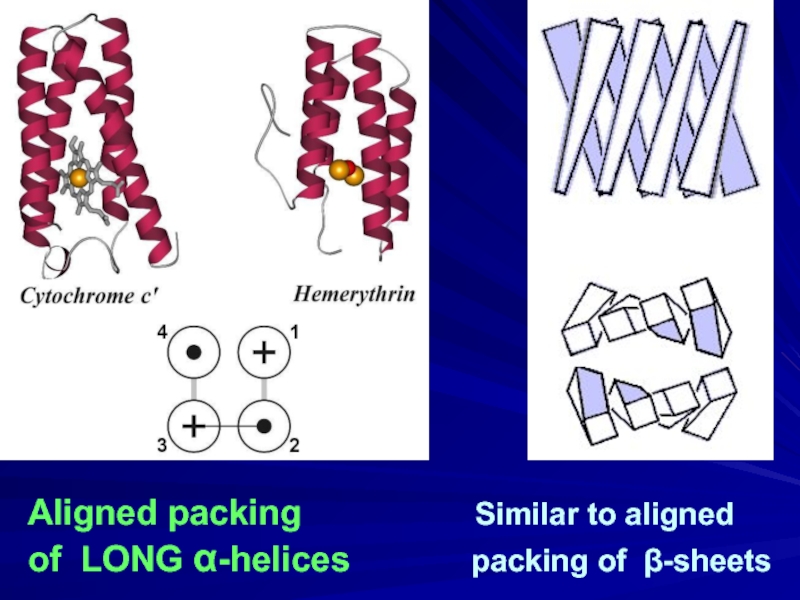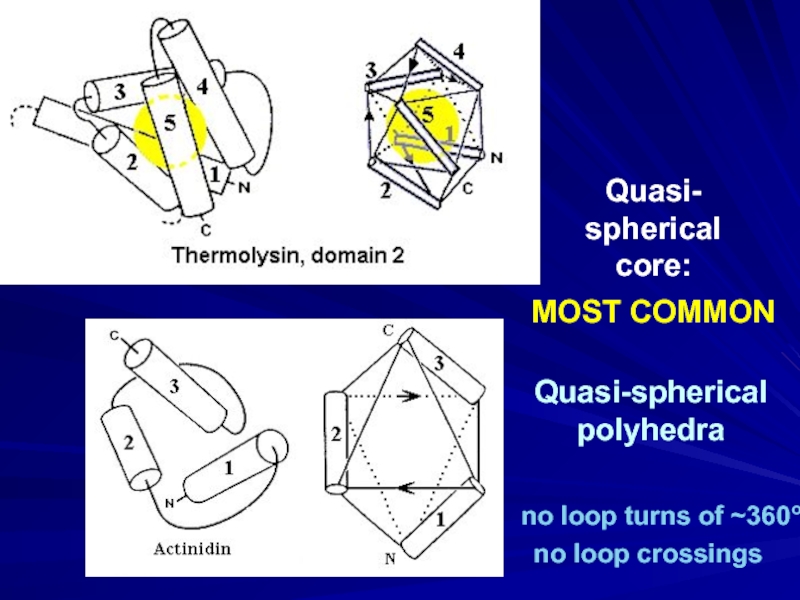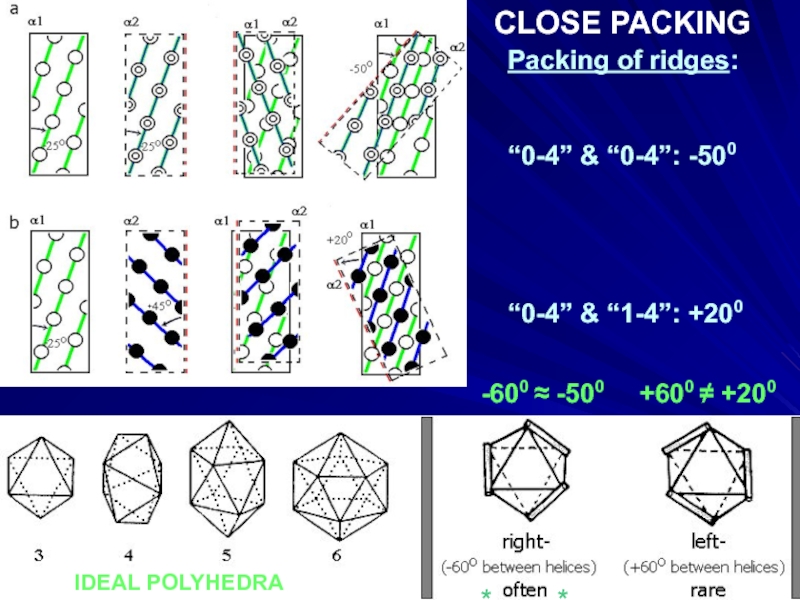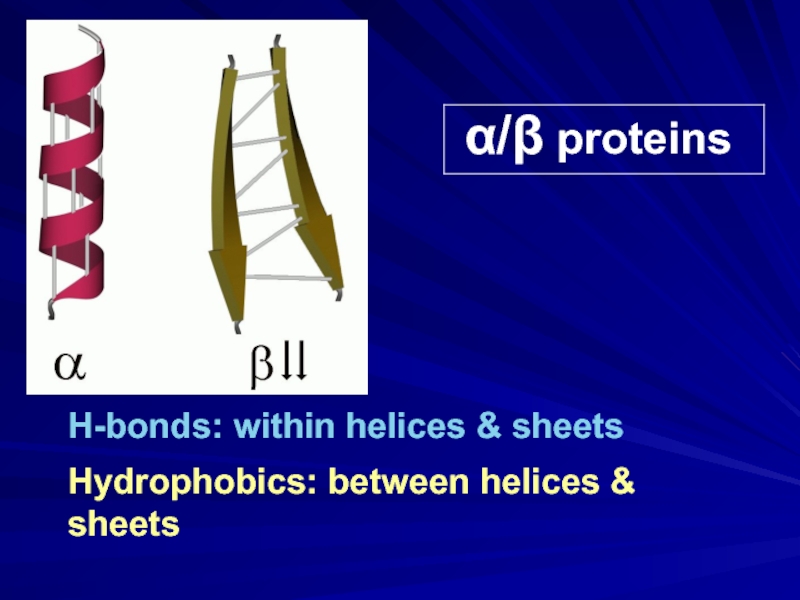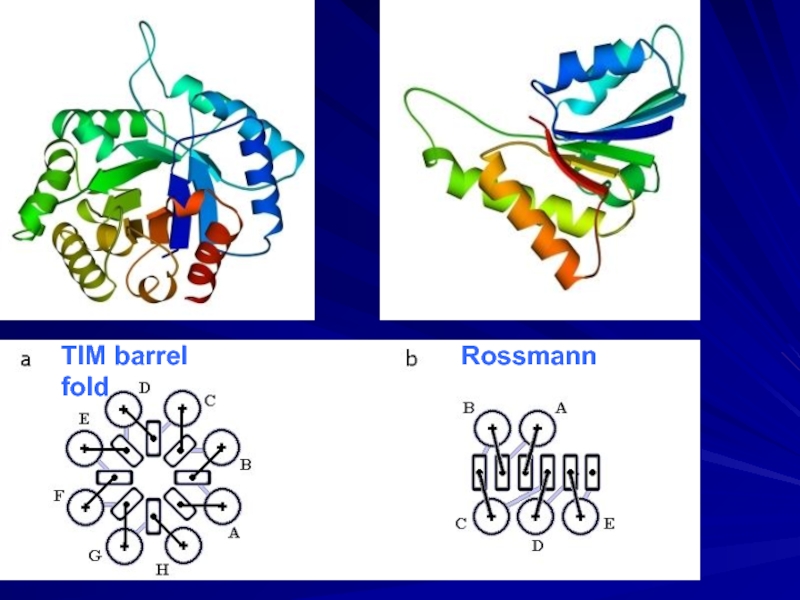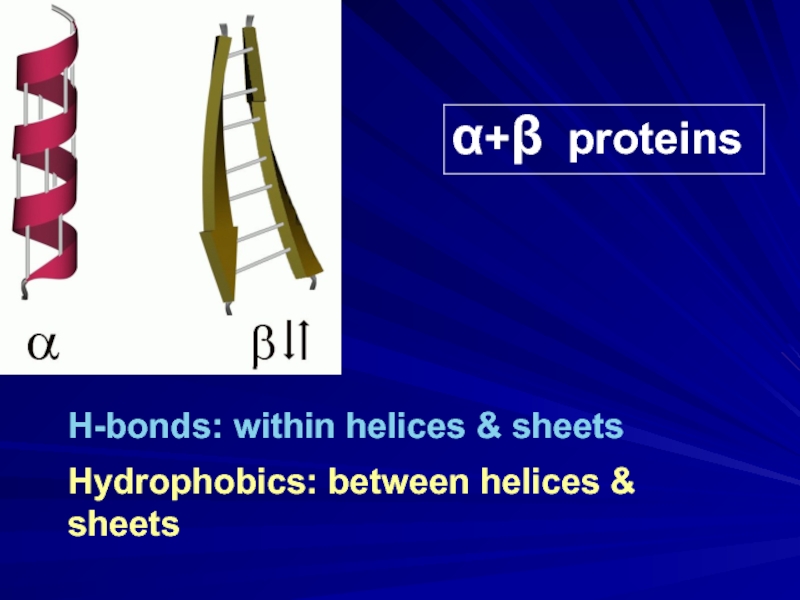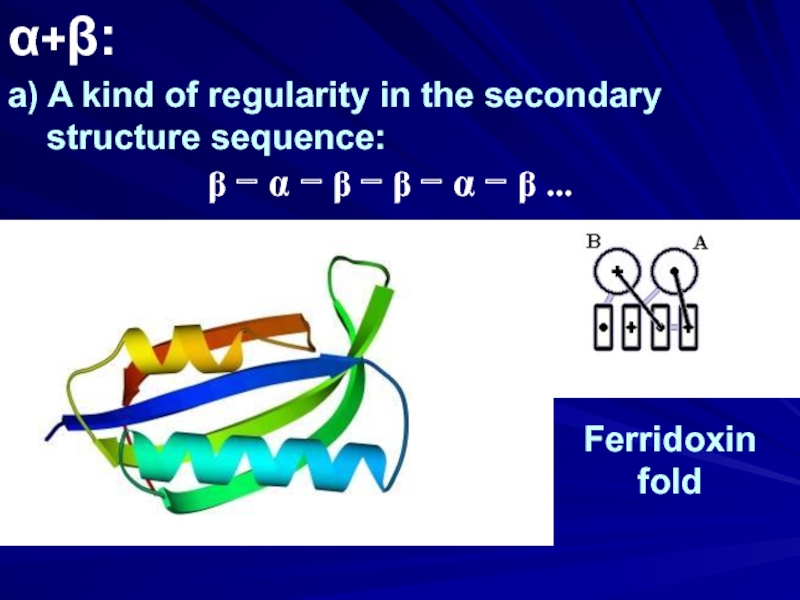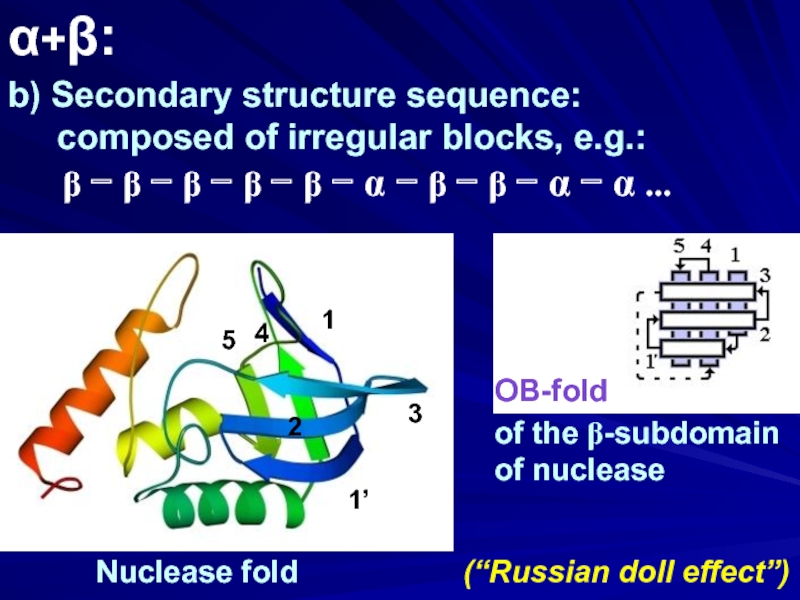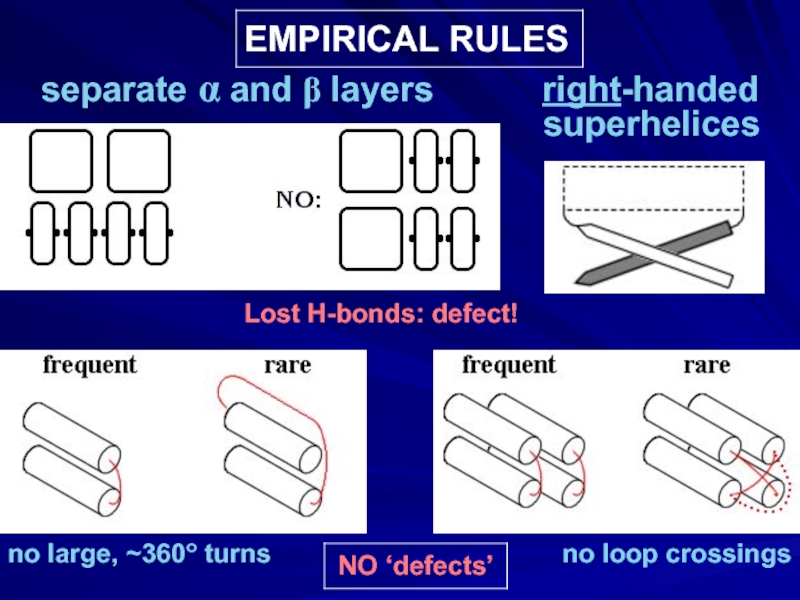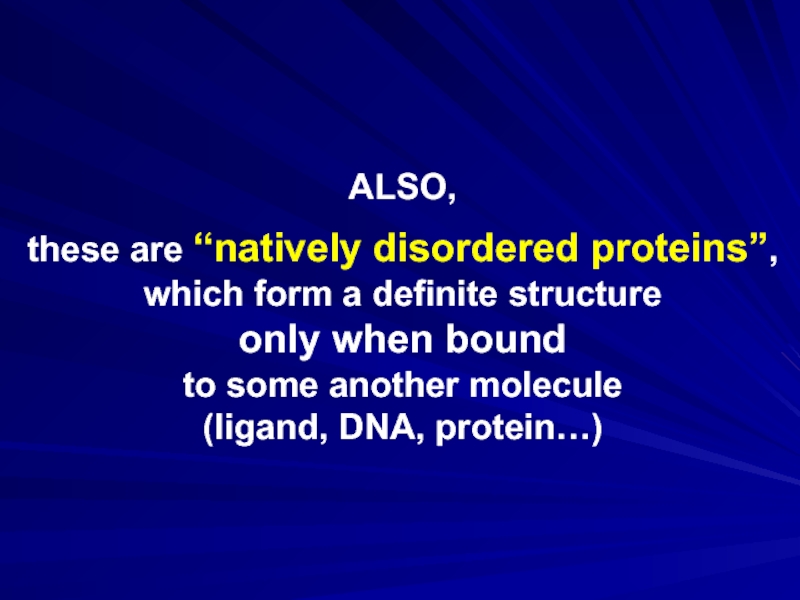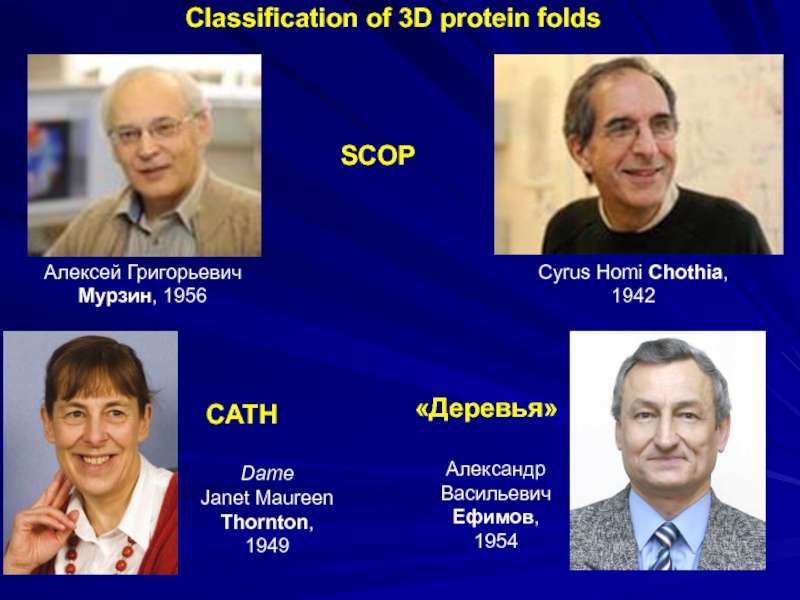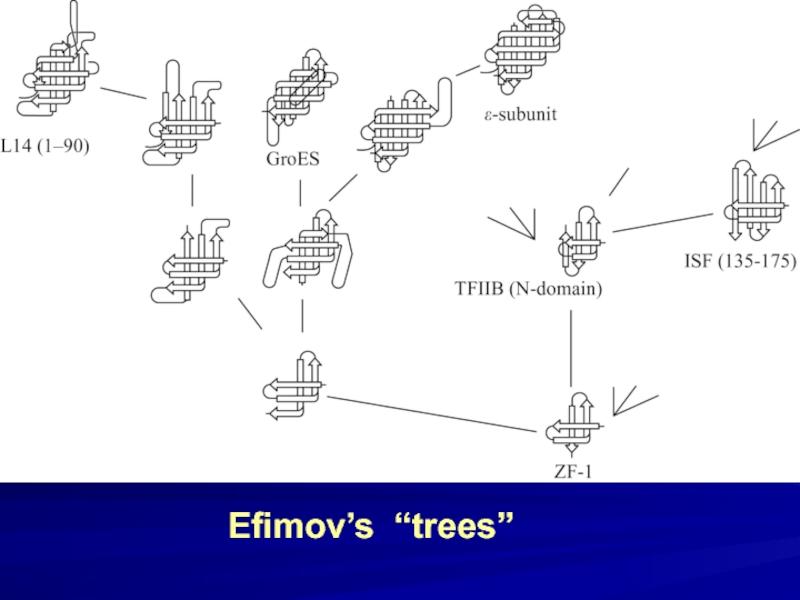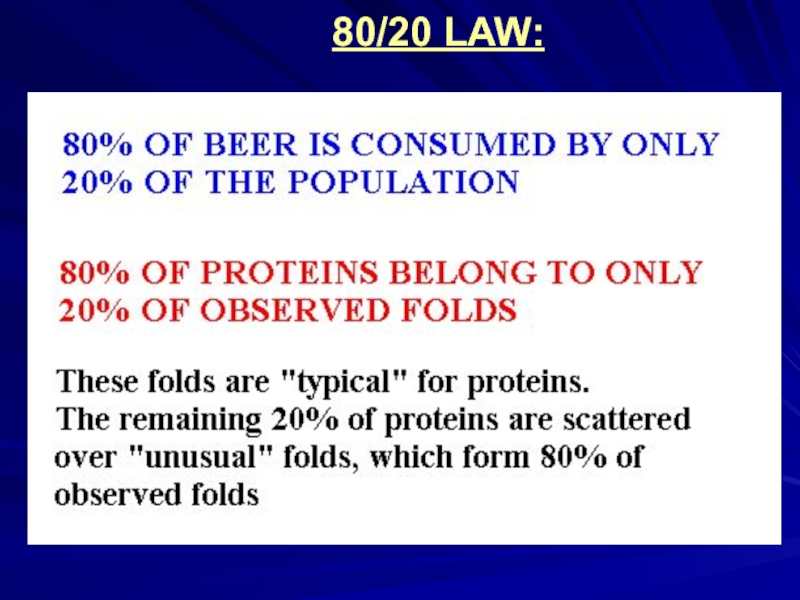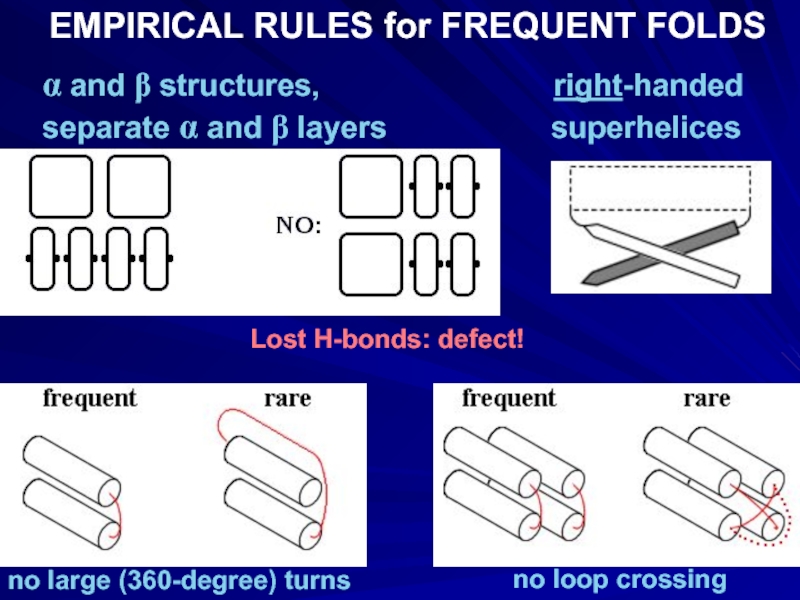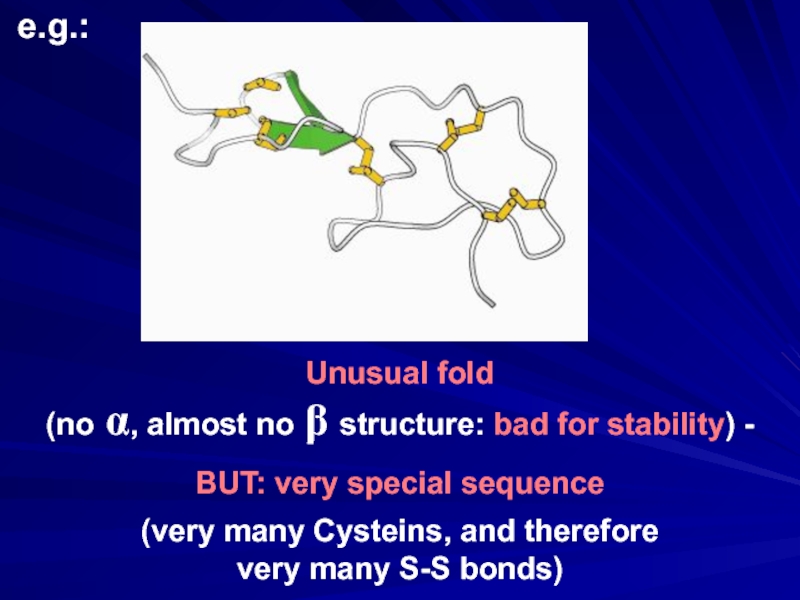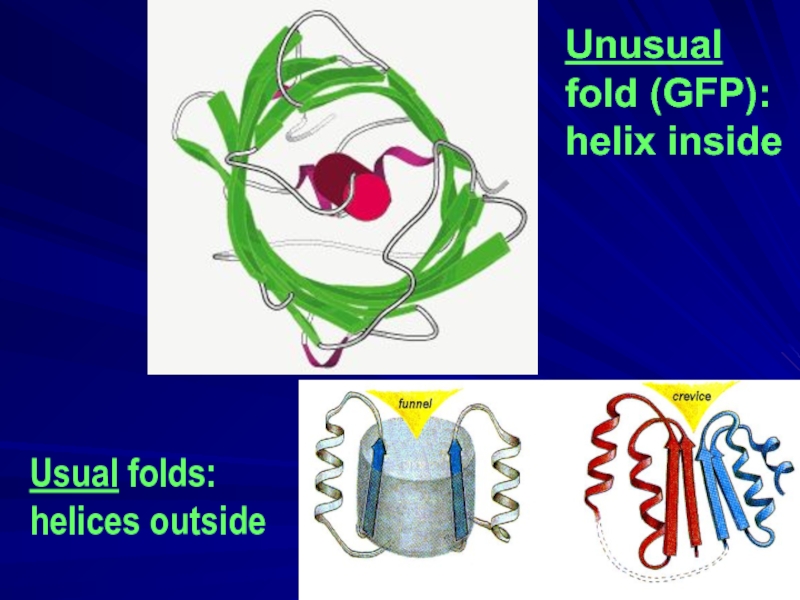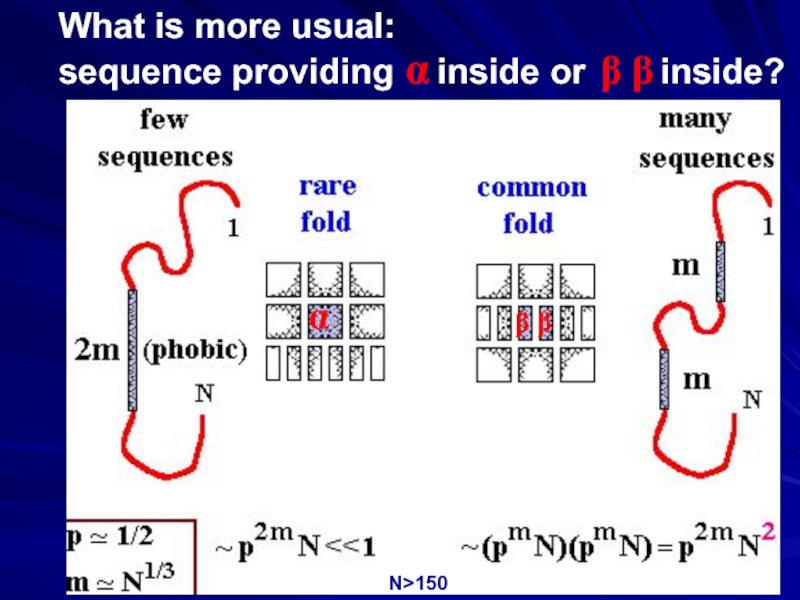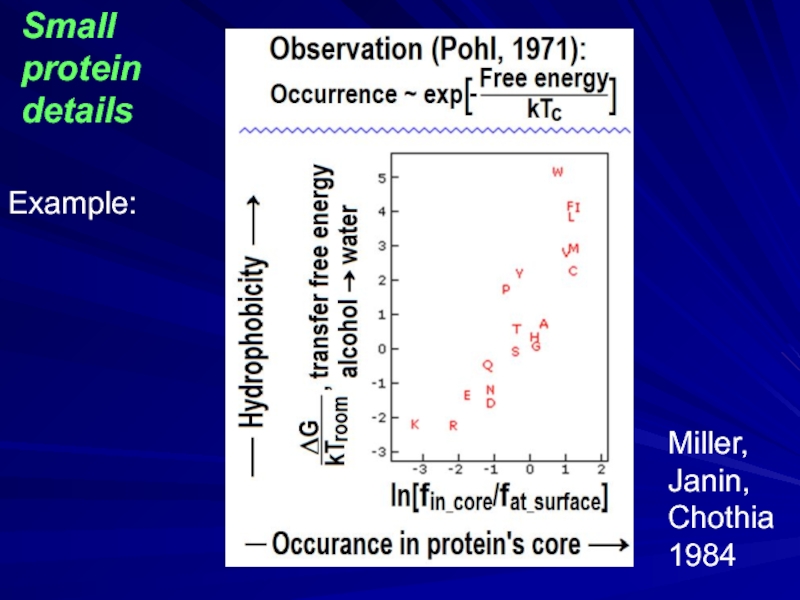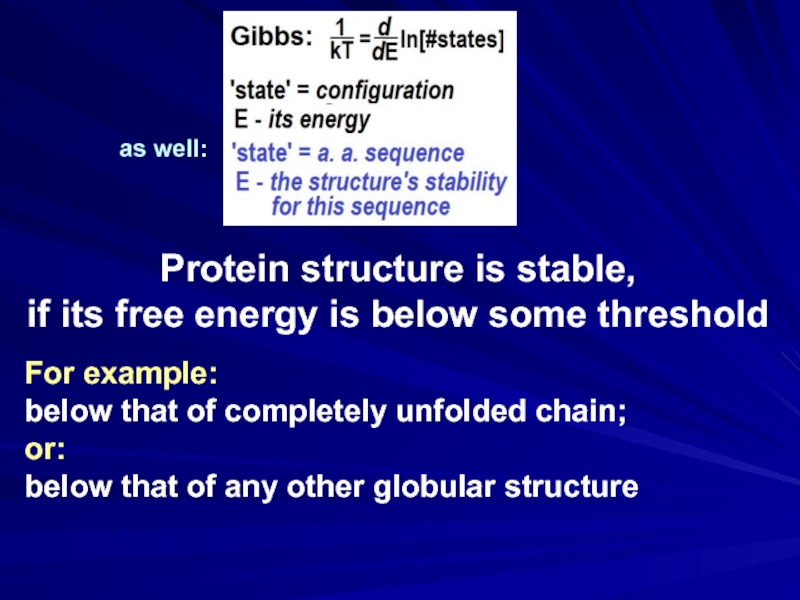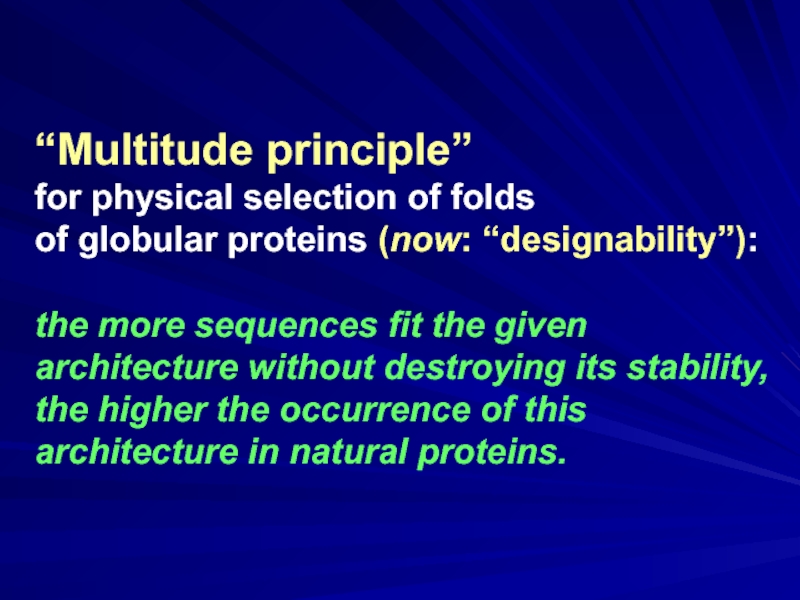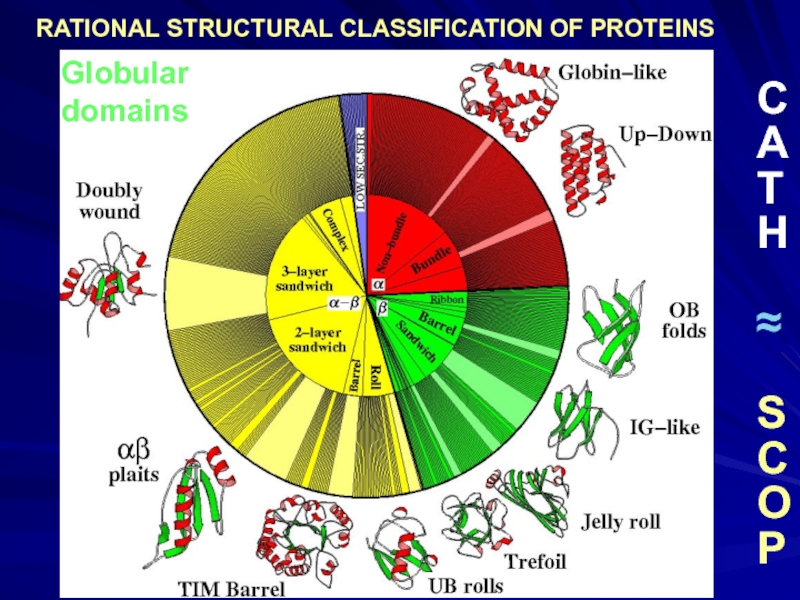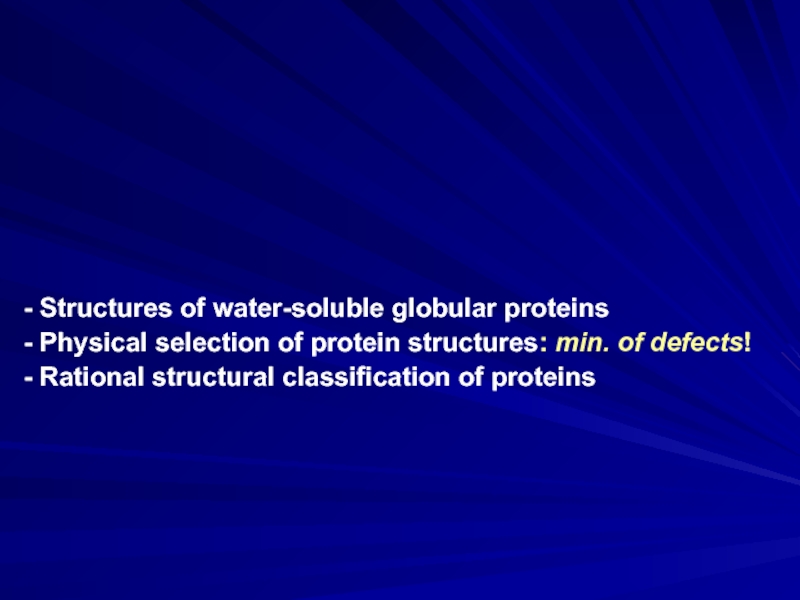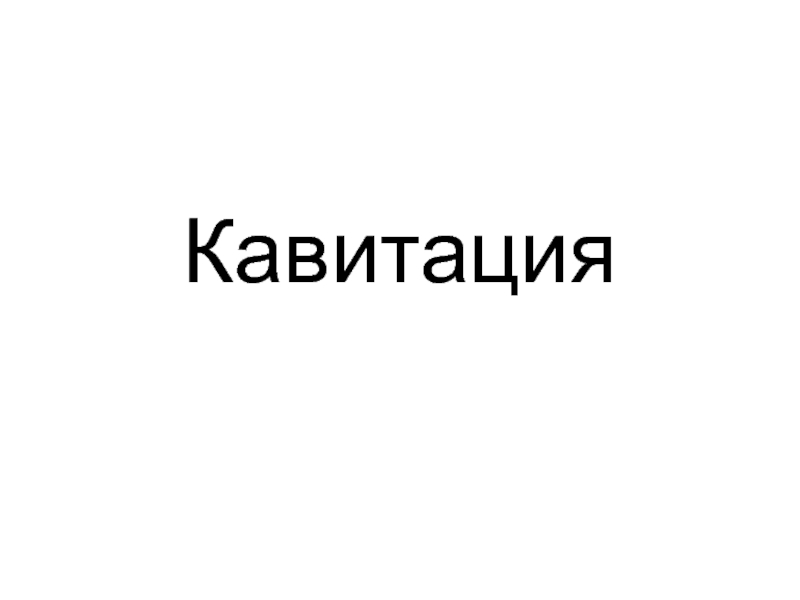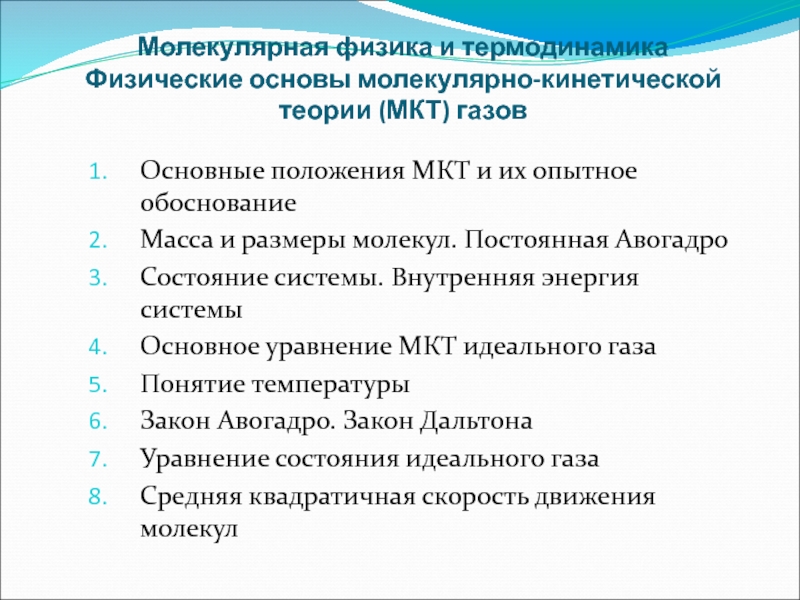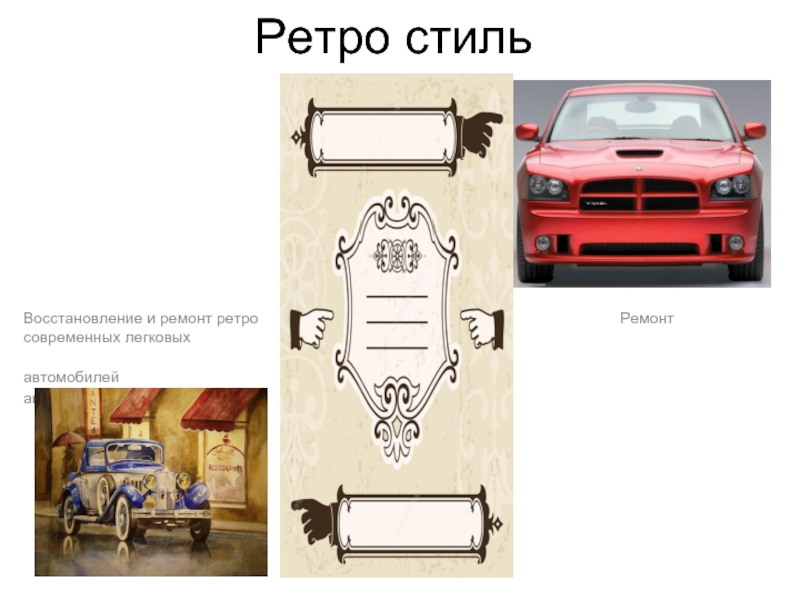- Главная
- Разное
- Дизайн
- Бизнес и предпринимательство
- Аналитика
- Образование
- Развлечения
- Красота и здоровье
- Финансы
- Государство
- Путешествия
- Спорт
- Недвижимость
- Армия
- Графика
- Культурология
- Еда и кулинария
- Лингвистика
- Английский язык
- Астрономия
- Алгебра
- Биология
- География
- Детские презентации
- Информатика
- История
- Литература
- Маркетинг
- Математика
- Медицина
- Менеджмент
- Музыка
- МХК
- Немецкий язык
- ОБЖ
- Обществознание
- Окружающий мир
- Педагогика
- Русский язык
- Технология
- Физика
- Философия
- Химия
- Шаблоны, картинки для презентаций
- Экология
- Экономика
- Юриспруденция
Structures of water-soluble globular proteins презентация
Содержание
- 1. Structures of water-soluble globular proteins
- 2. Fibrous H-bonds & hydrophobics Membrane ____ Globular proteins (water-soluble)
- 3. Hermann Emil Louis Fischer (1852 –1919) Nobel
- 4. domain 1 domain 2 ← single-domain
- 5. Secondary structures (α-helices, β-strands) are the
- 6. Max Ferdinand Perutz (1914 –2002) Nobel Prize 1962
- 7. Homologous proteins have similar folds. True, but
- 8. β-proteins β-sheets: usually, twisted
- 9. Orthogonal packing Aligned
- 10. orthogonal packing of one rolled β-sheet Retinol-binding protein
- 11. Trypsin-like SER-protease
- 13. β-sandwich Interlocked pairs: center of sandwich Greek
- 14. aligned packings of β-sheets a)
- 15. aligned packing of β-sheets 6-bladed propeller neuraminidase
- 16. UNusual LEFT-HANDED chain turns
- 17. α-proteins H-bonds: within helices & Hydrophobics: between helices
- 18. Quasi-cylindrical core (in fibrous) Quasi-flat core Quasi-spherical core MOST COMMON
- 19. Orthogonal packing
- 20. Aligned packing
- 21. Quasi-spherical polyhedra Quasi- spherical core:
- 22. Packing of ridges: “0-4”
- 23. α/β proteins H-bonds: within helices & sheets Hydrophobics: between helices & sheets
- 24. TIM barrel
- 25. α and β layers
- 26. Classification of β-barrels: “share number” S and
- 27. α+β proteins H-bonds: within helices & sheets Hydrophobics: between helices & sheets
- 28. α+β: a) A kind of regularity
- 29. α+β: b) Secondary structure sequence:
- 30. TYPICAL FOLDING PATTERNS (1977) Jane Shelby Richardson, 1941
- 31. EMPIRICAL RULES separate α and β
- 32. RESULT: NARROW SET OF PREDOMINANT
- 33. ALSO, these are “natively disordered proteins”,
- 34. Globular domains C A T H ≈ S C O P
- 35. Алексей Григорьевич Мурзин, 1956 Dame Janet
- 36. Efimov’s “trees”
- 37. 80/20 LAW:
- 38. EMPIRICAL RULES for FREQUENT FOLDS α
- 39. Unusual fold (no α, almost no β
- 40. Unusual fold (GFP): helix inside Usual folds: helices outside
- 41. What is more usual: sequence providing α
- 42. _____ ____
- 43. Miller, Janin, Chothia 1984 Example: Small protein details
- 44. THEORY Closed system: energy
- 45. Protein structure is stable, if its
- 46. More stable detail –
- 47. “Multitude principle” for physical selection of
- 48. Globular domains C A T H
- 49. - Structures of water-soluble globular proteins
Слайд 1
PROTEIN PHYSICS
LECTURE 13-16
- Structures of water-soluble globular proteins
- Physical selection of
- Structural classification of proteins
Слайд 3Hermann Emil Louis Fischer
(1852 –1919)
Nobel Prize 1902
Protein chain
Protein sequence
Frederick Sanger
(1918 –2013)
Nobel
Слайд 5Secondary structures (α-helices, β-strands) are
the most rigid and conserved details
they are determined with the smallest errors and
form a basis of protein classification
X-RAY
One protein, various
crystallizations
NMR
Structures, compatible
with one NMR experiment
Homologous
(closely related)
proteins
Слайд 6Max Ferdinand Perutz
(1914 –2002)
Nobel Prize 1962
X-ray 3D protein structure
Kurt Wüthrich, 1938
Nobel Prize
NMR 3D protein structure
Слайд 7Homologous proteins have similar folds.
True, but trivial.
NON-trivial:
Many NON-homologous proteins have
Hemo-
globin
Hemo-
globin
Слайд 8β-proteins
β-sheets: usually, twisted
H-bonds: within sheets
Hydrophobics: between sheets
____
Слайд 13β-sandwich
Interlocked pairs:
center of sandwich
Greek key:
edge of sandwich
Hydrophobic surfaces
of sheets
Слайд 14aligned packings
of β-sheets
a) different: only topologies
b)
6
5
8
3
2
1
6
3
8
1
2
6
3
8
1
γ-crystallin βCAB cpSTNV
Слайд 16
UNusual
LEFT-HANDED
chain turns
(AND NO
β−TWIST!)
Left-handed β-prism: Acyl
Right-handed β-prism: Pectate lyase
Usual
RIGHT-HANDED
chain turns
(AND RIGHT
β-TWIST!)
___________________________________________
TOPOLOGY of chain turns between parallel β-strands
Слайд 21Quasi-spherical
polyhedra
Quasi-
spherical
core:
MOST COMMON
no loop turns of ~360o
no loop crossings
Слайд 22Packing of ridges:
“0-4” & “0-4”: -500
“0-4” & “1-4”: +200
IDEAL POLYHEDRA
-600
* *
CLOSE PACKING
Слайд 25α and β layers
superhelices
Regular secondary structure sequence:
β − α − β − α − β − α − β − α − β − ...
Слайд 26Classification of
β-barrels:
“share number” S
and
strand number N.
Here: S=8, N=8
Standard
active site
position is
given by
the archi-
tecture
N
N
N
N
Слайд 28α+β:
a) A kind of regularity in the secondary
structure sequence:
β − α − β − β − α − β ...
Ferridoxin
fold
Слайд 29α+β:
b) Secondary structure sequence:
composed of irregular blocks,
β − β − β − β − β − α − β − β − α − α ...
Nuclease fold (“Russian doll effect”)
OB-fold
of the β-subdomain of nuclease
1
1’
3
5
4
2
Слайд 31EMPIRICAL RULES
separate α and β layers
superhelices
no large, ~360o turns
no loop crossings
Lost H-bonds: defect!
NO ‘defects’
Слайд 33ALSO,
these are “natively disordered proteins”,
which form a definite structure
only when
to some another molecule
(ligand, DNA, protein…)
Слайд 35Алексей Григорьевич Мурзин, 1956
Dame
Janet Maureen Thornton,
1949
Cyrus Homi Chothia,
1942
CATH
SCOP
Classification of
Александр
Васильевич
Ефимов,
1954
«Деревья»
Слайд 38EMPIRICAL RULES for FREQUENT FOLDS
α and β structures,
separate α and β layers superhelices
no large (360-degree) turns
no loop crossing
Lost H-bonds: defect!
Слайд 39Unusual fold
(no α, almost no β structure: bad for stability) -
BUT:
(very many Cysteins, and therefore
very many S-S bonds)
e.g.:
Слайд 44THEORY
Closed
system:
energy
E = const
CONSIDER: 1 state of “small part” with
states of thermostat with E-ε. M(E-ε) = 1 • Mth(E-ε)
St(E-ε) = k • ln[Mt(E-ε)] ≅ St(E) - ε•(dSt/dE)|E
Mt(E-ε) = exp[St(E)/k] • exp[-ε•(dSt/dE)|E/k]
WHAT IS “TEMPERATURE”?
S ~ ln[M]
Thus: d[ln(Mt)]/dE = 1/kT
Слайд 45Protein structure is stable,
if its free energy is below some
For example:
below that of completely unfolded chain;
or:
below that of any other globular structure
as well:
Слайд 46More stable detail –
more random sequences
Less stable detail
less random sequences
What's good for protein’s
detail is good for the whole
protein structure
“What's good for General
Motors is good for America”
(a famous misquote of
Charles Erwin Wilson)
Слайд 47“Multitude principle”
for physical selection of folds
of globular proteins (now:
the more sequences fit the given
architecture without destroying its stability,
the higher the occurrence of this
architecture in natural proteins.
Слайд 49
- Structures of water-soluble globular proteins
- Physical selection of protein structures:
- Rational structural classification of proteins
